

The Wonders of "Aquatecture"
“Like space exploration, the desire to explore and colonize the ocean’s depths stems from the human desire to explore the unknown.” —Felix Flesche, Water House
A new typology of architecture has been created in which there is an intentional association with water—aquatecture. Our fascination with the sea has led us to create opportunities for both temporary and permanent aquatic living. Created for two reasons, aquatecture is meant to provide either leisurely temporary accommodation or permanent residence when time on land is no longer an option. Over the years, architects, engineers and designers have created marine getaways, hotels in which residents leave the confounds of terrestrial life, for a short while at least.
The Burj Al Arab is a luxury hotel in Dubai designed by WS Atkins & Partners. Completed in 1999, the stunning five-star hotel rests on an artificial island constructed 280m offshore. When constructing aquatecture, or even waterfront properties, the materials used need to withstand intense exposure to natural elements. Using custom white aluminum composite ALPOLIC panels, coated in Lumiflon® FEVE resin, salt and wind have had no effect on the exterior ACM. Lumiflon® FEVE paint resin, commonly used on bridges, boats, and airplanes, created a strong exterior coating on the ALPOLIC panels. Additionally, acrylic glass was used on the exterior to withstand water pressure, and engineers worked with steel and concrete to protect the foundation from inevitable erosion.

As time progressed, designers created even more integrated designs, where portions of the hotel itself rest underwater. In order to gain a comprehensive marine experience, Drydocks World designed an underwater hotel that extends 32ft into the ocean. The planned hotels allow guests to experience the wonders of the underwater world in the comfort of their hotel rooms—no breathing apparatus required. The proposal suggests half the structure be submerged underwater, while the remaining half floats on the surface. Creating the best of terrestrial and subaquatic life, the innovative designs offer the unique opportunity to dwell beyond our natural habitat. Deep Ocean Technology, the company responsible for the hotels’ construction, believes the concept to be “inspired by ageless dreams—created by modern technology.”
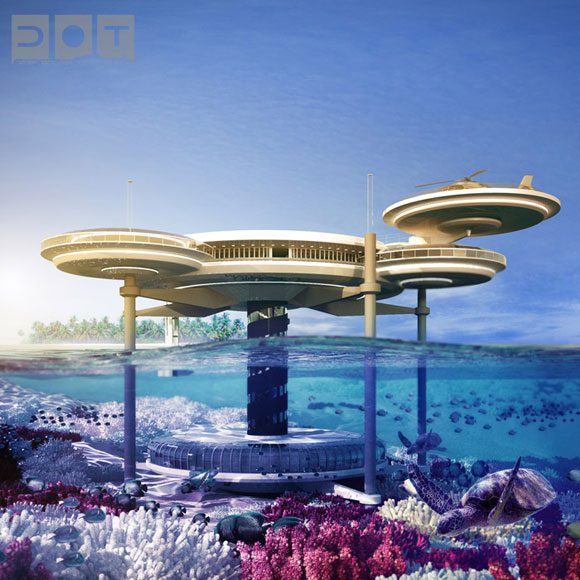
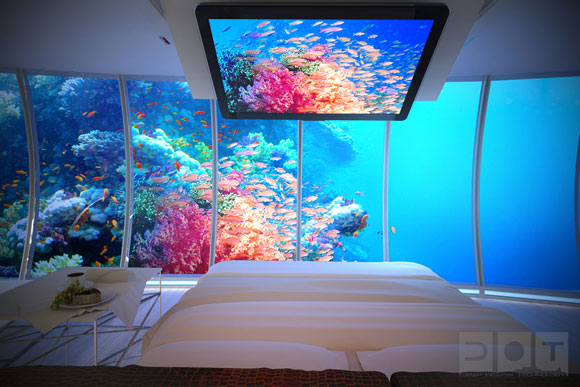
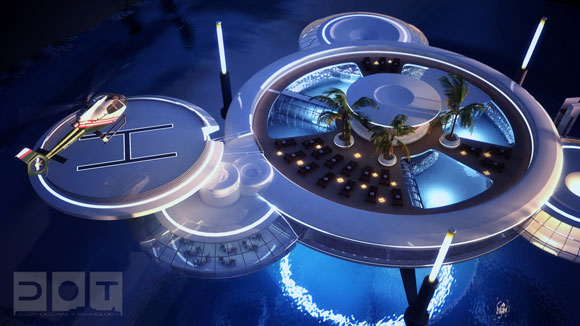
Water Discus Underwater Hotels information & photos © Deep Ocean Technology
On the other hand, aquatecture is seen as an adaptive strategy in which we combat terrestrial woes and seek an alternative to land. Instead of retreating inland, overpopulation and sea level rise will inevitably force our lives into the sea. With architects at the forefront of the environmental movement, Vincent Callebaut Architectures created a concept in 2008 called “Lilypads” in response to sea level rise. It was inspired by the world’s largest water lily, Amazonia Victoria Regia, increased by 250 times. They refer the project as an ‘amphibian’ because it floats in ocean but would have a large bio-diverse community of terrestrial and aquatic plant life. The proposed city could accommodate 50,000 people with all the pleasures of a seemingly normal terrestrial life. The design itself is incredibly stunning. It serves this fantastic functional purpose, but has all the characteristics of extravagant architecture.
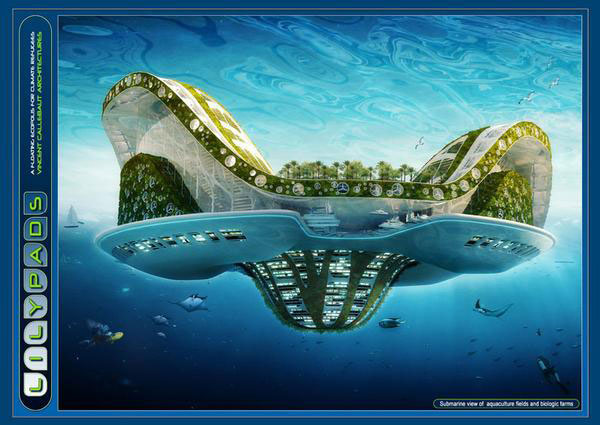
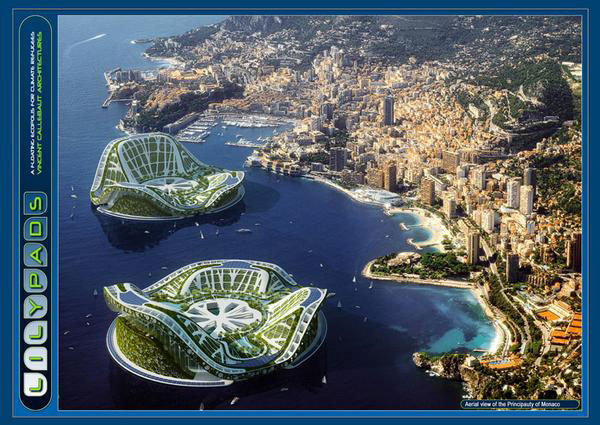
Lilypad information & photos © Vincent Callebaut Architectures
Whether voluntary or as a future residence for sustainable life, aquatecture is both fascinating and progressive.


